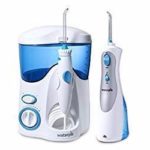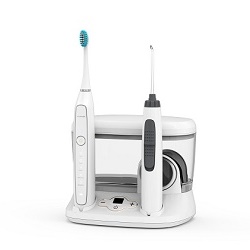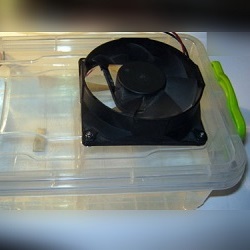Bracket irrigator
Wearing braces complicates oral care. Food residues stuck between the teeth and brackets create a favorable environment in the mouth for bacteria and microbes. Brushing your teeth with special toothbrushes and brushes is, in principle, possible. But it takes a long time to thoroughly clean. Salvation in this situation will be the irrigator for braces - a modern device that provides proper oral care during the period of their wearing.
Content
Operating principle
The irrigator for braces is a device with water tank. The water jet is saturated with air bubbles and is supplied under pressure, washing away bacterial plaque and remnants of stuck food. The device does it with ease, reaching the most inaccessible areas.
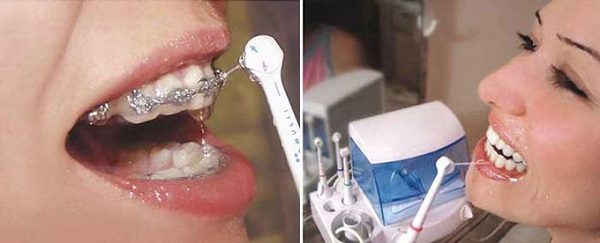
Benefits of using
Despite the high cost of irrigators, their acquisition is justified. Obvious benefits are noted and appreciated by experts. The use of such a device allows you to:
- High quality clean hard-to-reach places.
- Eliminate unpleasant odor, which appears as a result of poor cleansing of the oral cavity.
- Provide prevention of caries, various gum diseases, protects against the formation of tartar.
- Ensure the health of the gums, thanks to the massage produced during the cleaning.
- To facilitate care in the presence of implants and various prosthetic structures in the oral cavity.
Types of device
There are three types of irrigators:
- stationary;
- portable;
- flow-through.
Stationary irrigators
Consist of a water tank, elastic tube, handles with a set of nozzles. Capacity usually exceeds 500 ml, operation of the device is carried out from the accumulator. Irrigator for braces of this type is the most popular.
Benefits stationary irrigators:
- The large volume of the water tank allows you to clean your teeth at one time and at the same time perform gum massage.
- The presence of capacity allows you to add to the water refreshing preparations for the oral cavity, which makes the cleaning process pleasant and leaves a feeling of freshness.
- You can use the prepared water - pre-boiled or filtered.
- The high power of the device provides modes of use with an increase in the intensity of the jet head.
- Presence in the case of a compartment for storage of additional nozzles.
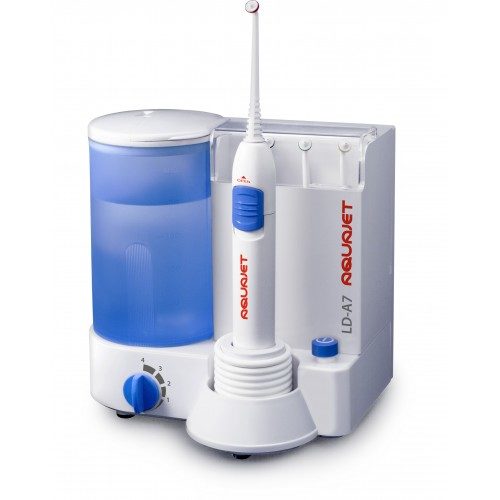
Along with the benefits there are limitations this type of irrigators:
- Because of the large body, it is difficult to find a place in the bathroom for it.
- It is necessary to monitor the water level in the tank and constantly replenish it.
- Due to its large size, it is difficult to take it on trips.
Portable
Portable irrigator for braces looks like electric toothbrush. Powered by batteries. In the handle of the device is a small water tank.
Benefits:
- Low cost in comparison with other devices.
- Ability to pre-prepare water for use.
- Presence of a case in which it is convenient to store additional nozzles.
- Small dimensions provide ease of storage and the ability to take it with you on a trip.
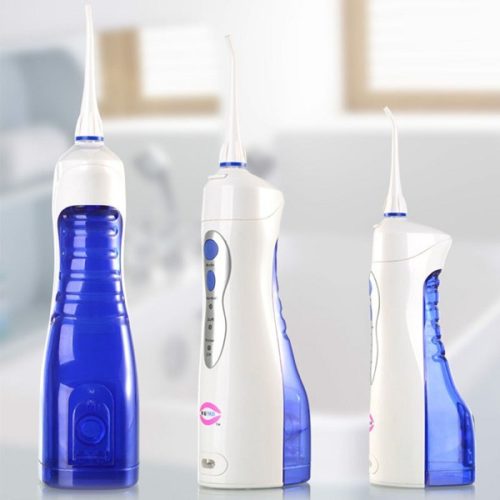
Disadvantages:
- Small water tank that is insufficient for single cleaning.
- Frequent battery changes.
- A limited number of modes of operation.
- Low water pressure.
- The weight of the device, filled with water, reaches up to 500 g
Flow through
This type of instrument has no water tank. They are connected directly to the water supply using a nozzle for a crane.
Benefits:
- There is no limit to the amount of water used.
- The device does not require a lot of space.
- Existence of the built-in filter for water.
- Most devices of this type do not need batteries, as they work under pressure from the water supply network.
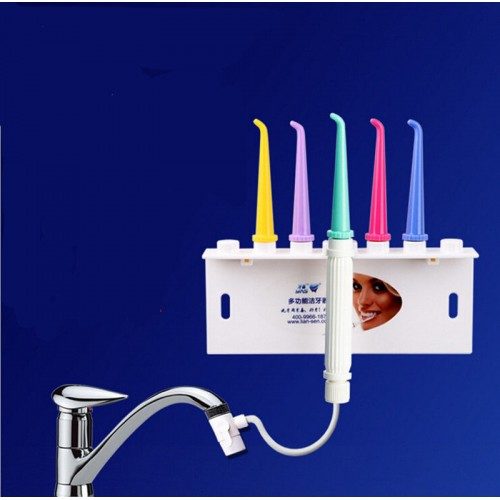
Disadvantages:
- Connection is difficult if the crane is non-standard.
- The filter does not cope with many harmful impurities contained in the water, and it must be changed frequently.
- You can not add to the water rinse.
- The only mode of operation of the device.
Features of use
During the period of wearing braces only irrigators are able to provide the necessary care for the oral cavity. And no other gadgets will do it better than them! But this does not mean that they can completely replace toothbrushes.
Important! First you need to brush your teeth with a familiar brush, and only then use an irrigator.
Since the nozzle is a replaceable part, the irrigator for braces is not a device for individual use.One device can use several people.

Recommendations when using irrigator:
- Before using the device, it is necessary to determine the condition of the teeth and gums. It can only be used with a healthy oral cavity.
- It is necessary to begin with the weakest water pressure. Gums should get used to the procedure. When initially used, sometimes even healthy gums may bleed slightly. But you shouldn't be afraid, it takes time for the gums to get used to the massage and get stronger. 1-2 weeks of regular use is usually sufficient.
- Be aware of the temperature of the water used: it should not exceed 40 ° C. This will save mucosal burns and discomfort if the teeth have areas with damaged enamel.
- The nozzle head should be held at an angle of 90 ° to the surface to be cleaned.
- In the presence of braces, crowns, bridges and other artificial structures, you must use the device at least 1-2 times a day, and better after each meal.
- With a slight inflammation of the gums, dentists recommend using antiseptic solutions. It is better not to use ordinary rinses, as they foam.Manufacturers offer special tools for irrigators.
- Do not use herbal or saline solutions, as they pollute the system of the device and reduce its service life.
Important! You can not use the irrigator in the period of exacerbation of diseases such as periodontal disease, gingivitis, acute periodontitis, etc.
Irrigator Care Rules
Proper care of devices significantly prolongs their life. Observing the following rules will ensure a long life for your instruments:
- The irrigator cannot be lowered entirely in water, especially in the included state.
- Use of the purified water will relieve the device from a scum.
- After use, it is necessary to empty the tank and leave the device turned on for 2-3 seconds to completely dry it.
- Wipe dry all parts of the device and store in a dry place.
- Before turning on the device, you must first fill the tank with water.
Conclusion
Irrigator for braces - a modern means to care for the oral cavity, and perhaps, today - the most effective. Even if you don’t already have braces, it is recommended use the device and further. After all, in addition to thorough cleaning of hard-to-reach areas, it improves the blood circulation of the gums.Thus, it is a great preventive tool and provides oral health. Which one of the many devices that is most suitable for you and your family is up to you!

/rating_off.png)






